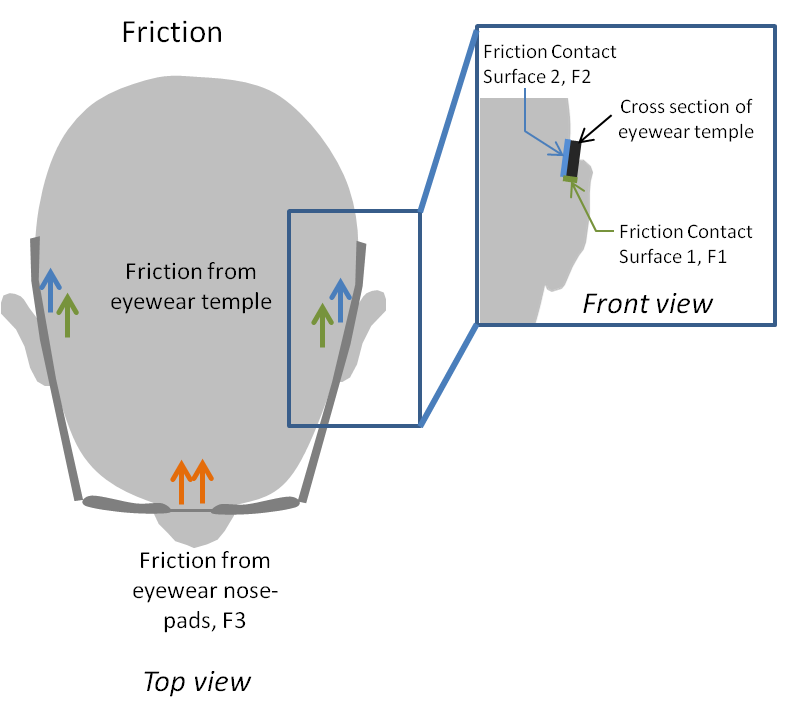Articles | Managing Eyewear slippage using friction
Friction is the primary force that keeps your eyewear from slipping down under gravitational pull. Therefore, your eyewear will start to slide down when friction is unable to keep it in place.
In engineering, friction is the force from the applied force and the friction coefficient (µ) between the two materials in contact.
The equation takes the form,
F = Fn x µ,where Fn is the force applied normal (90 degrees) to the contact surface
There are three contact surfaces where friction acts to prevent your eyewear from slipping down. These contact surfaces are,
- Contact between bottom of the eyewear temple and top of the ears, F1
- Contact between the side of the eyewear temple and side of your head, F2
- Contact between nose-pads and your nose, F3

|
The normal force for F1 comes from the weight of the eyewear temple.
µ is the friction coefficient between the two materials in contact.
For eyewear temple of the same weight, a higher µ will give rise to more friction.
Generally, µ between silicone and skin is greater than µ between most hard plastics and skin.
The video below gives a demonstration of higher µ leads to less eyewear slippage.
Greater friction between nosepad and nose, F3, will also help to prevent eyewear slippage. However, this is only effective when the eyewear is horizontal to the ground. As the head is tilted down, friction between nosepad and nose, no matter how great it is initially, will reduce to zero when the face is looking vertically down. In most cases, the eyewear falls off from the face before it is vertically down as shown in the video below.
Unlike friction from between the nosepad and nose, friction from the temple will not be reduced to zero either when the face is looking horizontally or vertically. Therefore, with sufficient friction at the temple, the eyewear will stay in place even when the face is looking vertically down. However, friction from the temple is less effective than the nosepad in preventing minor slipping in the horizontal facing direction. Therefore, the ideal eyewear would have high friction both at the nosepad and the temple. This will prevent slipping in all cases. See video of the experiment below.
Note:
Friction coefficient is the properties between two material surfaces. The friction on anti-slip mat and test objects surfaces may be different from that of the same material on the skin.
Read also
14 July 2018
26 July 2018
27 January 2018